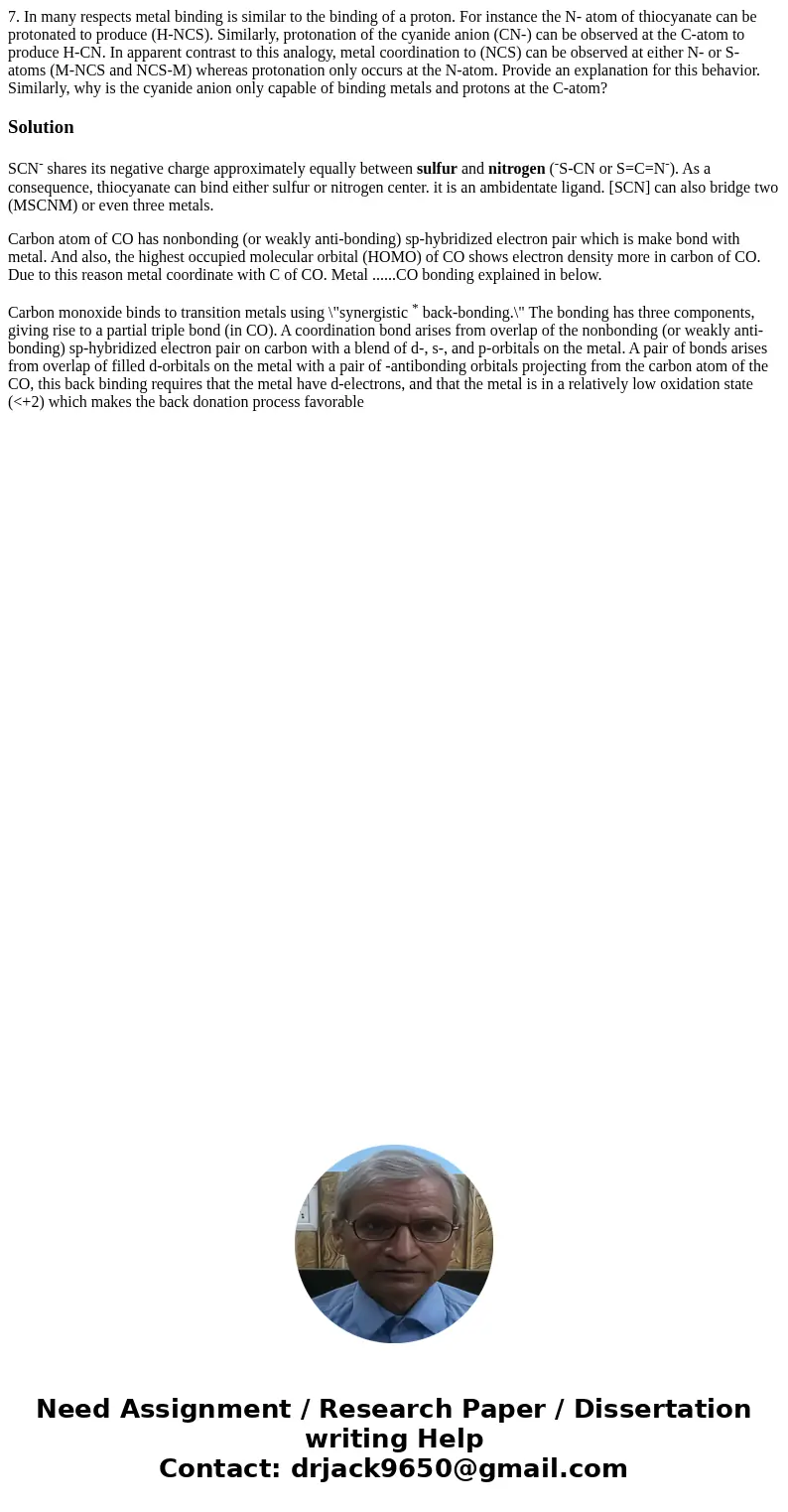7 In many respects metal binding is similar to the binding o
Solution
SCN- shares its negative charge approximately equally between sulfur and nitrogen (-S-CN or S=C=N-). As a consequence, thiocyanate can bind either sulfur or nitrogen center. it is an ambidentate ligand. [SCN] can also bridge two (MSCNM) or even three metals.
Carbon atom of CO has nonbonding (or weakly anti-bonding) sp-hybridized electron pair which is make bond with metal. And also, the highest occupied molecular orbital (HOMO) of CO shows electron density more in carbon of CO. Due to this reason metal coordinate with C of CO. Metal ......CO bonding explained in below.
Carbon monoxide binds to transition metals using \"synergistic * back-bonding.\" The bonding has three components, giving rise to a partial triple bond (in CO). A coordination bond arises from overlap of the nonbonding (or weakly anti-bonding) sp-hybridized electron pair on carbon with a blend of d-, s-, and p-orbitals on the metal. A pair of bonds arises from overlap of filled d-orbitals on the metal with a pair of -antibonding orbitals projecting from the carbon atom of the CO, this back binding requires that the metal have d-electrons, and that the metal is in a relatively low oxidation state (<+2) which makes the back donation process favorable

 Homework Sourse
Homework Sourse